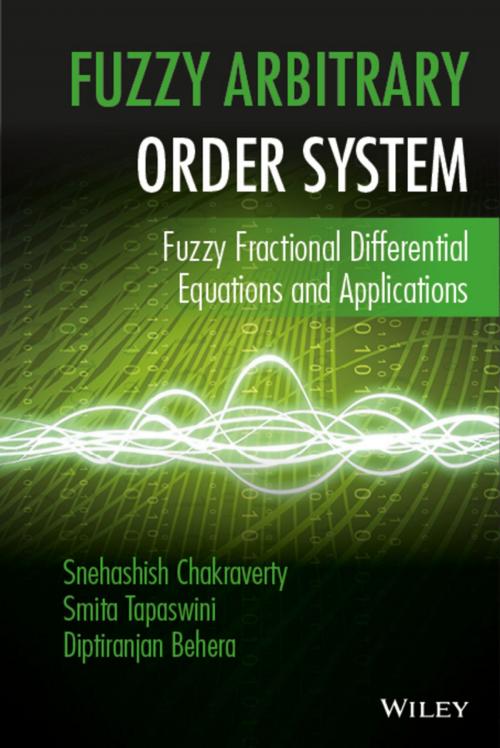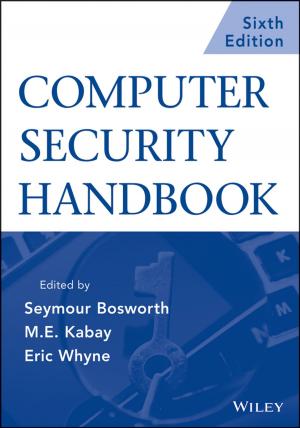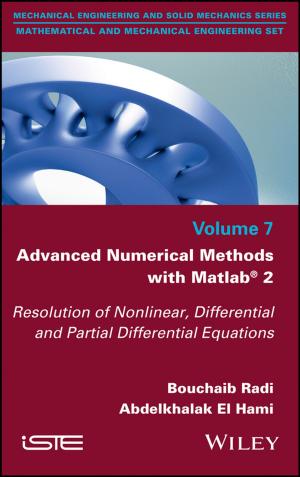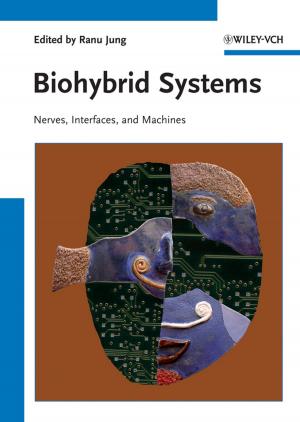Fuzzy Arbitrary Order System
Fuzzy Fractional Differential Equations and Applications
Nonfiction, Science & Nature, Mathematics, Differential Equations| Author: | Snehashish Chakraverty, Smita Tapaswini, Diptiranjan Behera | ISBN: | 9781119004172 |
| Publisher: | Wiley | Publication: | August 9, 2016 |
| Imprint: | Wiley | Language: | English |
| Author: | Snehashish Chakraverty, Smita Tapaswini, Diptiranjan Behera |
| ISBN: | 9781119004172 |
| Publisher: | Wiley |
| Publication: | August 9, 2016 |
| Imprint: | Wiley |
| Language: | English |
Presents a systematic treatment of fuzzy fractional differential equations as well as newly developed computational methods to model uncertain physical problems
Complete with comprehensive results and solutions, Fuzzy Arbitrary Order System: Fuzzy Fractional Differential Equations and Applications details newly developed methods of fuzzy computational techniquesneeded to model solve uncertainty. Fuzzy differential equations are solved via various analytical andnumerical methodologies, and this book presents their importance for problem solving, prototypeengineering design, and systems testing in uncertain environments.
In recent years, modeling of differential equations for arbitrary and fractional order systems has been increasing in its applicability, and as such, the authors feature examples from a variety of disciplines to illustrate the practicality and importance of the methods within physics, applied mathematics, engineering, and chemistry, to name a few. The fundamentals of fractional differential equations and the basic preliminaries of fuzzy fractional differential equations are first introduced, followed by numerical solutions, comparisons of various methods, and simulated results. In addition, fuzzy ordinary, partial, linear, and nonlinear fractional differential equations are addressed to solve uncertainty in physical systems. In addition, this book features:
- Basic preliminaries of fuzzy set theory, an introduction of fuzzy arbitrary order differential equations, and various analytical and numerical procedures for solving associated problems
- Coverage on a variety of fuzzy fractional differential equations including structural, diffusion, and chemical problems as well as heat equations and biomathematical applications
- Discussions on how to model physical problems in terms of nonprobabilistic methods and provides systematic coverage of fuzzy fractional differential equations and its applications
- Uncertainties in systems and processes with a fuzzy concept
Fuzzy Arbitrary Order System: Fuzzy Fractional Differential Equations and Applications is an ideal resource for practitioners, researchers, and academicians in applied mathematics, physics, biology, engineering, computer science, and chemistry who need to model uncertain physical phenomena and problems. The book is appropriate for graduate-level courses on fractional differential equations for students majoring in applied mathematics, engineering, physics, and computer science.
Presents a systematic treatment of fuzzy fractional differential equations as well as newly developed computational methods to model uncertain physical problems
Complete with comprehensive results and solutions, Fuzzy Arbitrary Order System: Fuzzy Fractional Differential Equations and Applications details newly developed methods of fuzzy computational techniquesneeded to model solve uncertainty. Fuzzy differential equations are solved via various analytical andnumerical methodologies, and this book presents their importance for problem solving, prototypeengineering design, and systems testing in uncertain environments.
In recent years, modeling of differential equations for arbitrary and fractional order systems has been increasing in its applicability, and as such, the authors feature examples from a variety of disciplines to illustrate the practicality and importance of the methods within physics, applied mathematics, engineering, and chemistry, to name a few. The fundamentals of fractional differential equations and the basic preliminaries of fuzzy fractional differential equations are first introduced, followed by numerical solutions, comparisons of various methods, and simulated results. In addition, fuzzy ordinary, partial, linear, and nonlinear fractional differential equations are addressed to solve uncertainty in physical systems. In addition, this book features:
- Basic preliminaries of fuzzy set theory, an introduction of fuzzy arbitrary order differential equations, and various analytical and numerical procedures for solving associated problems
- Coverage on a variety of fuzzy fractional differential equations including structural, diffusion, and chemical problems as well as heat equations and biomathematical applications
- Discussions on how to model physical problems in terms of nonprobabilistic methods and provides systematic coverage of fuzzy fractional differential equations and its applications
- Uncertainties in systems and processes with a fuzzy concept
Fuzzy Arbitrary Order System: Fuzzy Fractional Differential Equations and Applications is an ideal resource for practitioners, researchers, and academicians in applied mathematics, physics, biology, engineering, computer science, and chemistry who need to model uncertain physical phenomena and problems. The book is appropriate for graduate-level courses on fractional differential equations for students majoring in applied mathematics, engineering, physics, and computer science.















